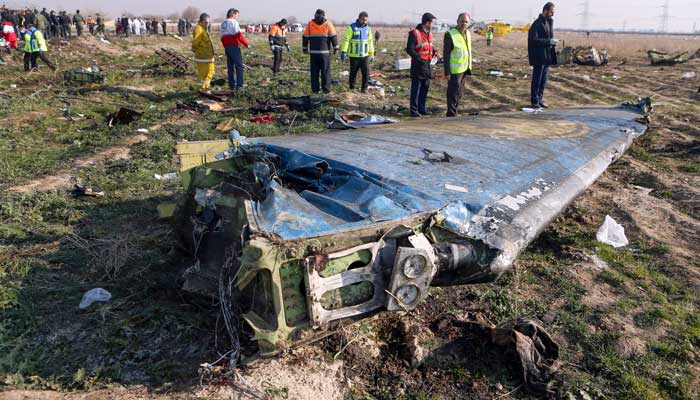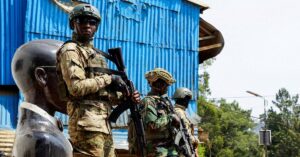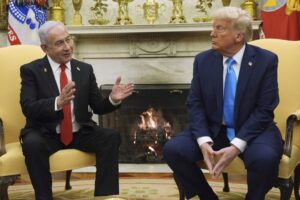
Evidence suggests an Iranian missile brought down a Ukrainian passenger plane that crashed near Tehran, possibly in error, Western leaders say.
Canada and the UK called for a full and thorough investigation into the crash, which killed all 176 people on board.
Iran’s civil aviation chief, however, said he was “certain” that the plane was not hit by a missile.
The crash came just hours after Iran carried out missile strikes on two airbases housing US forces in Iraq.
US media have speculated that the timing of the crash suggests the plane may have been mistaken for a US warplane as Iran prepared for possible US retaliation for the strikes.
Victims included 82 Iranians, 63 Canadians and 11 Ukrainians as well as nationals from Sweden, the UK, Afghanistan and Germany.
CBS News quoted US intelligence sources as saying a satellite detected infrared “blips” of two missile launches, followed by another blip of an explosion.
Meanwhile, Newsweek quoted a Pentagon and senior US intelligence officials, as well as an Iraqi intelligence official, as saying they believed Ukraine International Airlines flight PS752 was hit by a Russian-made Tor missile.
Video obtained by the New York Times appeared to show a missile streaking across the night sky over Tehran and then exploding on contact with a plane. About 10 seconds later a loud explosion is heard on the ground. The plane, ablaze, continues to fly.
US President Donald Trump said on Thursday that he had “suspicions” about what happened to the plane.
Ukrainian President Volodymyr Zelensky called on Western countries to share their information about the crash.
Amid tensions heightened by the US killing of top Iranian general Qasem Soleimani on 3 January, Iran initially said it would not hand over the recovered black box flight recorders to Boeing, the plane’s manufacturer, or to the US.
However, an Iranian official later told reporters that the US had been formally invited to take part in the investigation, and the US National Transportation Safety Board (NTSB) confirmed it had assigned an investigator.
Boeing said it would support the NTSB in the inquiry, and the Transportation Safety Board of Canada said it had also been invited to the accident site by Tehran.
Under global aviation rules Iran has the right to lead the investigation, but manufacturers are typically involved.
Iranian TV pictures later in the day showed the crash site being bulldozed.
Canadian Prime Minister Justin Trudeau said he had received intelligence from multiple sources indicating that the plane was shot down by an Iranian surface-to-air missile, adding that it was possible that this was unintentional.
“This reinforces the need for a thorough investigation,” he said. “Canadians have questions and they deserve answers.”
But he said it was too early to apportion blame or draw any conclusions, and refused to go into detail about the evidence.
The Canadians on the flight were expecting to fly on to Toronto from Kyiv.
UK Prime Minister Boris Johnson echoed Mr Trudeau’s words and said Britain was working closely with Canada and other international partners affected by the crash.
Speaking in Canada, UK Foreign Secretary Dominic Raab said British nationals were advised not to travel to Iran, “given the body of information that UIA Flight 752 was shot down by an Iranian surface-to-air missile, and the heightened tensions”.
At a news conference on Friday, Iran’s Civil Aviation Organisation (CAOI) chief Ali Abedzadeh repeated his view that a missile was not the cause of the crash.
“The thing that is clear to us and that we can say with certainty is that this plane was not hit by a missile,” he told reporters.
“As I said last night, this plane for more than one and a half minutes was on fire and was in the air and the location shows that the pilot was attempting to return.”
On Friday, government spokesman Ali Rabiei described the reports of a missile strike as “psychological warfare”.







